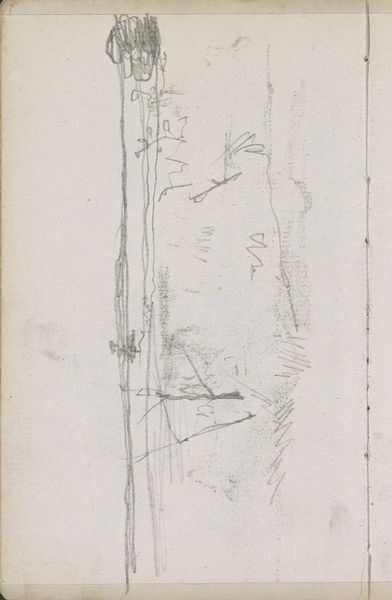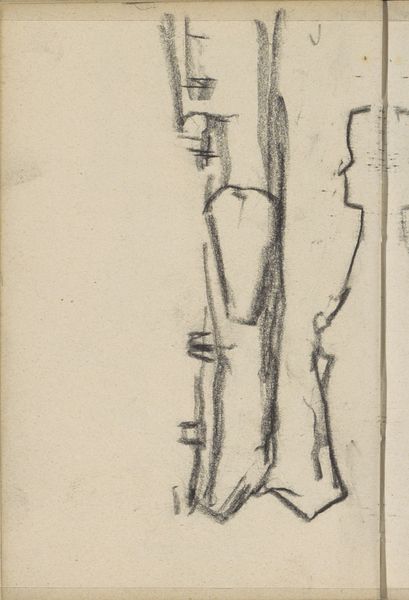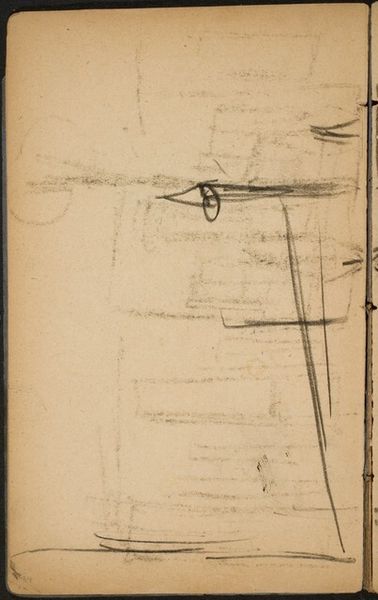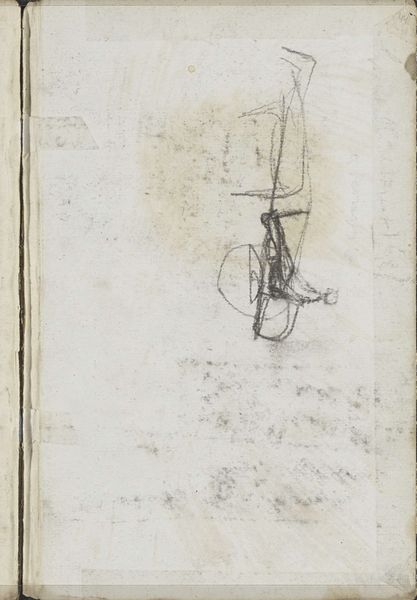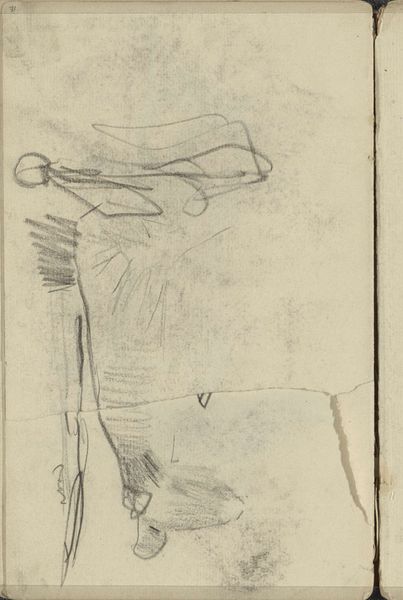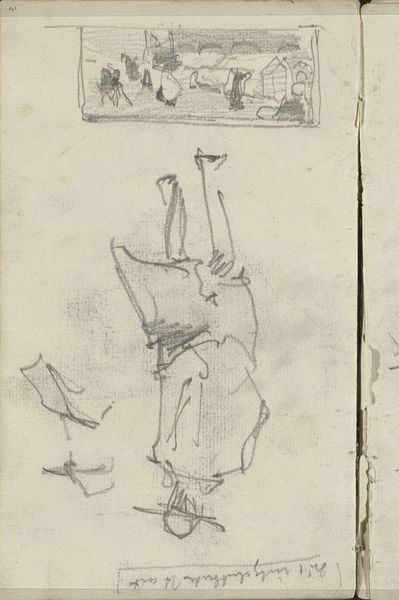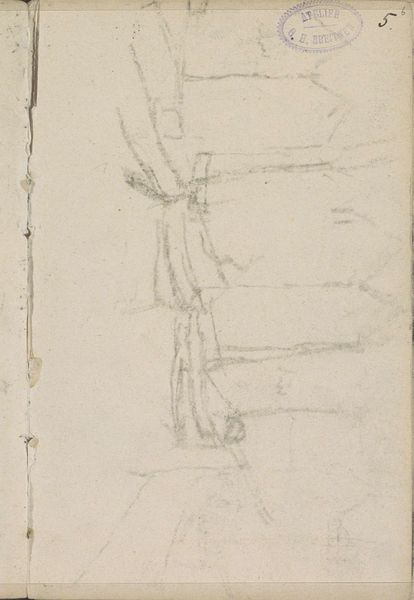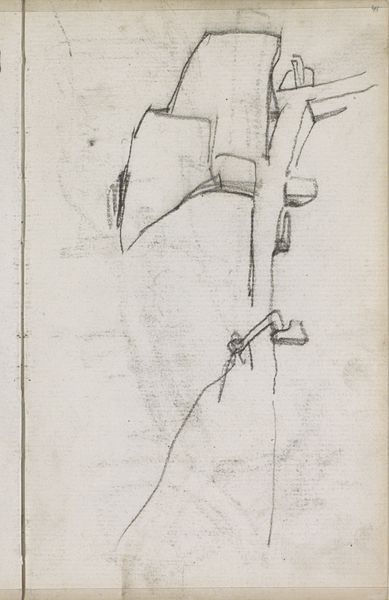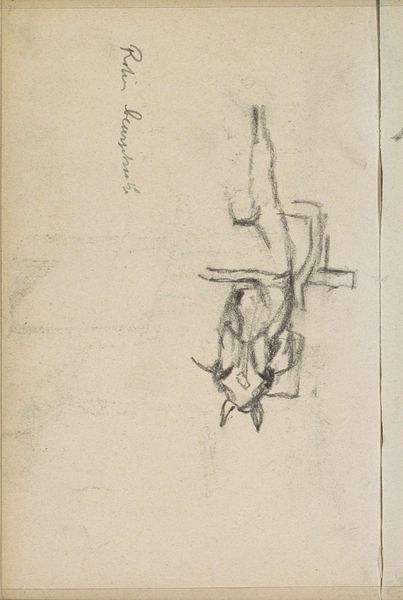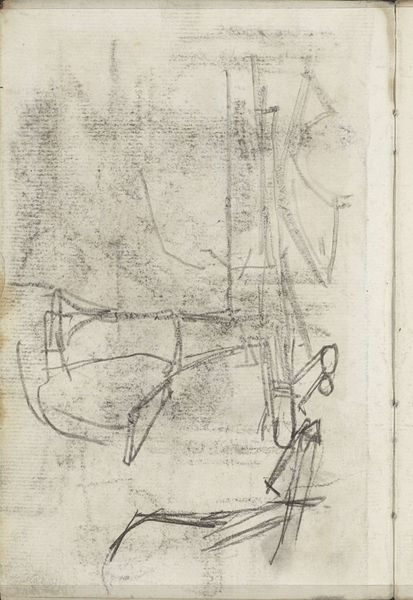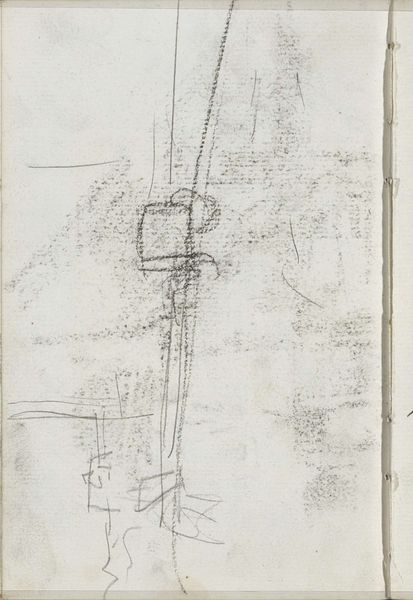
drawing, pencil
#
drawing
#
amateur sketch
#
toned paper
#
light pencil work
#
quirky sketch
#
dutch-golden-age
#
impressionism
#
pencil sketch
#
incomplete sketchy
#
landscape
#
personal sketchbook
#
pen-ink sketch
#
pencil
#
sketchbook drawing
#
sketchbook art
Copyright: Rijks Museum: Open Domain
Curator: Here we have "Two Figures Before a Farm," a pencil drawing made around 1884 to 1886 by George Hendrik Breitner. What are your immediate impressions? Editor: It strikes me as incredibly vulnerable, almost haunting. The rough strokes, the use of the paper’s tone... it feels like a fleeting moment captured in a dream. Curator: That resonates with my own interpretation. Breitner’s oeuvre, while celebrated for capturing the energy of urban life, often grappled with societal tensions and the alienation of individuals. Looking at this drawing, one can consider it within a larger discussion on rural communities during a time of increasing urbanization in the Netherlands. Editor: Yes, there's a powerful sense of absence even though figures are present. I find myself focusing on the crude rendering of what appears to be the structure supporting some kind of containers... Do those bowls atop of it mean anything significant, maybe protection or daily rituals associated with farms? Curator: That's an interesting reading, the forms are so loose it's hard to say with any certainty. But certainly thinking about the symbols associated with daily life in contrast with those increasingly removed from it gives an angle to Breitner's broader work. What I also appreciate here is his subtle rendering of the figures, seeming to fade into their surroundings... What this makes me think of, if one might take such license, is that the drawing serves as commentary on social hierarchies, rural marginalization. Editor: It’s interesting how that pencil line dividing the space serves not only to guide our eye but to conceptually separate the figures and their labor from the "outside." This division mirrors broader issues of land ownership, exploitation, and class structures that marked the period. Curator: Exactly. These small sketches often reveal as much, if not more, about the artist's engagement with socio-political issues as his grander works. They become sites of intimate contemplation on the dynamics shaping individual experiences within a transforming world. Editor: And the power of an unfinished sketch lies in inviting us into this contemplation. It resists easy readings, allowing space for new connections to emerge across time and cultures. Curator: Absolutely. It's an evocative work—quiet, but charged with unspoken narratives that invite exploration from different standpoints. Editor: Agreed, it serves as a potent reminder that the impact of art lies in its capacity to stir profound questions and insights within each viewer.
Comments
No comments
Be the first to comment and join the conversation on the ultimate creative platform.
